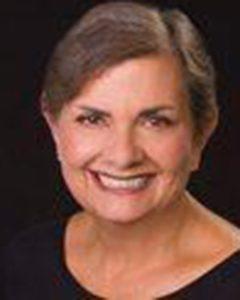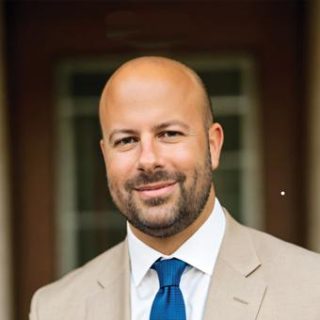FOCUS
Time: A timeless topic
By Joellen Killion
Categories: Fundamentals, Learning systems/planning, ResourcesAugust 2023
Ten years ago, as a part of Learning Forward’s Transforming Professional Learning initiative, I wrote a workbook on finding time for professional learning. A decade later, the topic is still a frequent one among the professional learning leaders I work with and a pressing challenge for schools everywhere.
If there were a simple solution to the troublesome topic of finding enough time, we would have already discovered it. But time cannot be approached as a technical challenge, one for which we already have the answer. Rather, time is an adaptive challenge, one that we approach with continuous invention, creativity, and experimentation. Time is a nonrenewable resource. Like fossil fuels and earth minerals, it does not regenerate. We can’t make more of it, but we can make wise decisions about its use.
Those decisions manifest our priorities. As financial planner Carl Richards once wrote in a New York Times blog, “I often refer to the old saying, ‘The checkbook and the calendar never lie.’ How we spend our lives, be it money or time, says something about us. It says something about our values” (Richards, 2015).
Time spent on professional learning demonstrates a true priority for teaching and learning because educators’ learning is linked to students’ learning. When educators learn, students not only achieve greater success, but they also have opportunities to witness adults modeling the value of continuous learning and striving to strengthen their professional practice.
At the heart of successful efforts to find time for professional learning are understanding how time is currently being used, examining policies and practices that are guiding its use, and reassessing whether current practices are meeting the learning needs of students and their educators.
Learning Forward created a workbook, Establishing Time for Professional Learning (Killion, 2023), that describes steps for forming a time study team and engaging in those processes, starting with conducting a time audit. The audit is an essential starting place because you can’t make informed decisions about your time use until you understand what your school, district, or system is doing now. You can learn more about the time audit and begin conducting one using this issue’s Tools section. The workbook is available at learningforward.org/report/establishing-time-professional-learning/
As you consider your time use and plan next steps, the following key points about time can help bring some clarity to this knotty issue.
''Time spent on professional learning demonstrates a true priority for teaching and learning because educators’ learning is linked to students’ learning.'' - @jpkillion #teaching #learning #K12education Share on XDecisions about time cannot be driven by zero-sum beliefs. Too often, educators, policymakers, and the public view the time educators spend in professional learning as lost instructional time. They believe it’s a trade-off, with students on the losing end.
Of course, we know and research shows that the opposite is true — both students and educators gain when professional learning is continuous, accessible, differentiated, and equitably distributed within schools. But false and pernicious views put pressure on leaders to limit professional learning time. Helping all stakeholders view time for professional learning as a necessary condition for student success can open possibilities for increasing access to continuous professional learning.
''Helping all stakeholders view time for professional learning as a necessary condition for student success can open possibilities for increasing access to continuous professional learning.'' - @jpkillion #Stand4PL #Principals… Share on XAction step: Assess beliefs about time among various school and school system stakeholders.
Educators often have different assumptions and beliefs about the nature of time in schools and, in particular, time for collaborative professional learning. Understanding those differences is key for finding common ground. The tool Exploring Assumptions About Time, found in the workbook, presents opposing views about time to engage team members in reflecting on their personal views about time for collaboration and identifying differences among the team.
Educators may also have different perceptions of how much time is currently being allocated; for example, leaders and teachers may have different opinions. The tool Staff Perceptions About Collaborative Time, also in the workbook, can be shared with all staff members to gather perceptions about how the school is currently allocating time for professional learning and provide a baseline from which to set goals and make changes.
Embedding professional learning into the workday expands educators’ access to it.
Many educators perceive professional learning as time away from students, such as out-of-school training or conferences, workshops and meetings on nonstudent contact days, and summer course work. However, job-embedded professional learning inside the school day and even in the classroom can be one of the most effective and continuous methods (Killion et al., 2023). Such approaches take the form of coaching and mentoring, peer classroom visits, demonstration classrooms, lesson study, and action research, to mention a few.
When the work is recast as continuous learning within the context of the real work educators do each day, there are many more opportunities for finding professional learning time — and for making that time count. Every meeting, lesson, coaching interaction, performance evaluation, team conversation, and peer interaction can become a learning experience when framed as a collaborative opportunity to engage in inquiry, assess the effects of decisions, turn tacit knowledge into explicit knowledge, and engage in hypothesis generation and testing.
Action step: Examine the types of professional learning your staff are currently engaged in.
As you are examining how you allocate professional learning time, look for both more traditional uses of time (e.g., at conferences, away from students) and time within the school day and year. Identify those that can be redesigned to include more collaborative learning.
As you design your ideal learning opportunities, study professional learning designs that can occur within the work of teaching and leading and that can be implemented while interacting with students. Look at school schedules from other districts and schools that have expanded professional learning time, including schools outside the U.S. education system (e.g., Darling-Hammond et al., 2017), as well as Learning Forward’s books, online resources, and standards.
Outdated policies and routines interfere with redesigning the use of time. Often, habits and routines coupled with outdated policies about time interfere with changing how time is allocated and used within schools. For example, one controversial issue is whether to dedicate time to individual planning versus collaborative planning. Because teachers have fought for years to have planning time recognized as crucial for their effectiveness, when they do get more time, the use of the newly found time is insufficiently clarified or guided. As a result, it is perceived as time for teachers to work independent of one another rather than as a team.
Yet when teachers work collaboratively, they are able to have a greater impact on student success, increase their job satisfaction, and share responsibilities, in part, because of a sense of collective efficacy or a group’s confidence in its abilities to succeed (Bandura, 1993). Collective efficacy is strongly and positively associated with student achievement, with an effect size nearly four times other factors that influence student academic success (Eels, 2011; Visible Learning, n.d.). It makes sense, then, for teams of educators to work together rather than independently to plan for instruction, assess student work, and use data for instructional decisions, and share confidence in each other’s capacity to be effective.
Furthermore, educators may make assumptions that current habits are rooted in established policies when there is, in fact, flexibility to make changes. Understanding what is and isn’t required can open windows of opportunity for change and even spur efforts to change policies that are not serving educators and students well.
Action step: Examine existing policies and current practices to determine opportunities for change.
Examine policies including contractual agreements, legislation, local school board policies, and other guidance documents to uncover the specific parameters regarding time. Look especially at guidance that determines or enables time for planning and other types of collaboration. Identify misconceptions that may exist or habitual practices that are perceived as policy. Reflect with your team on what is currently possible to change and what you might work toward changing down the road.
Leveraging what we learned about virtual learning can broaden professional learning opportunities. The sudden shift from in-person to virtual education in spring 2020 is one example of how urgency becomes a critical motivator for professional learning. Educators were hungry for opportunities to learn how to be effective online teachers, team members, coaches, and administrators. They learned quickly, eagerly, and in new ways. (See examples in the 2020 issues of The Learning Professional, available at learningforward.org/the-learning-professional/) Imagine if educators perceived other changes, such as new curriculum and revised pedagogical practices, as equally urgent and significant. They might approach professional learning for those initiatives with the intensity of early pandemic efforts.
District and school administrators are responsible for engaging teachers in understanding why new curriculum and pedagogical practices are necessary and beneficial for student and educator success, and to do so in a way that conveys urgency without the fear that the pandemic brought. This is a necessary step in creating the drive for continuous professional learning, and with that drive and urgency comes a new willingness to find time for professional learning.
Action step: Consider how technology and virtual learning can increase access to professional learning without increasing educators’ hours and schedules.
For inspiration on how to expand access to professional learning through technology, look to other districts and schools’ efforts, including those featured in previous issues of The Learning Professional (e.g., DePiper et al., 2023; Foster et al., 2020; and Simons et al., 2022). As you consider these and other options, be sure to ground new efforts in alignment among the content of professional learning, content standards for student learning, and professional practice standards to ensure strong coherence.
Advocacy for professional learning time is everyone’s responsibility. All educators share responsibility for communicating to policymakers and community members about how professional learning contributes to students’ success. Being an advocate means educators proactively sharing what they are learning, how they are implementing it within their work, and the effects it is having in classrooms and on student learning. It means explaining that, just as other professionals are continuously updating their knowledge and practices, educators have a responsibility to stay current in their field.
Professionals must stay current in their fields, including educators. Advocating for time and resources to stay cutting-edge also means informing the community. What are you learning about? How will it impact students? #ProfDev… Share on XClassroom and school newsletters, presentations at school board meetings, educator showcases, and other means of sharing learning increase both the public’s and policymakers’ understanding about why time for professional learning is essential for student success. Simple actions, like reframing the language we use about professional learning time, matter, too.
For example, as I was driving past a school’s announcement board one day, I saw a message that said, “No school today — Professional development.” I was struck by the main message those words conveyed: the challenging fact that families needed to find alternative child care for the day, rather than the importance of educators’ learning. I called the principal (whom I know well) and recommended she revise the announcement to say: “We are learning today so all students will learn more.” I hoped this message would enroll the community as supporters of professional learning because they recognized the benefit.
So often, the only message we send to parents and caregivers about professional learning is whether school is in session for students. This then creates repercussions for them and their children. It is no wonder they don’t value professional learning time — or even actively complain about it. We can all help by taking the time to explain the reasons for and benefits of professional learning.
Action step: Examine messaging about professional learning within and outside of schools and consider opportunities for reframing it.
Educators at all levels can share communications about professional learning, including an explanation of the link between professional learning and student success. For example, in parent-teacher conferences, a teacher might describe instructional strategies he has been learning to engage students in more classroom discussions to help them articulate their learning and use academic language. In a classroom newsletter or weekly email to parents, a teacher might include a short summary of a book her team is reading and how it is influencing her instructional planning. In a principal newsletter, the principal might summarize the goals of the schoolwide professional learning and how they relate to the school’s overarching improvement goals.
In addition to these everyday ways of communicating about the value of professional learning, advocacy for state and federal investments in professional learning time is important. Learning Forward has a suite of tools and resources to help educators tell their stories of professional learning impact and to advocate, especially for Title IIA of the Every Student Succeeds Act, which is the main federal source of professional learning funding in the U.S. They are available at poweredbytitleii.com
Effective professional learning takes more than time. An increasing number of schools and districts have rearranged school day schedules and school year calendars to provide more time for professional learning. However, the availability of time is not a guarantee that the time is being used effectively.
Professional learning should align with Standards for Professional Learning (Learning Forward, 2022), which delineate the research-based conditions, processes, and content for professional learning to contribute to student success. The standards also guide educators to align professional learning with district and school priorities and goals and build coherence within the education system so that learning for educators leads to more learning for students.
Action step: Assess all professional learning for its alignment with Standards for Professional Learning.
The standards were designed to help educators across levels build the conditions for success, employ transformative processes, and make informed decisions about the content of professional learning. When you assess your own use of time in light of the standards, you can make necessary adjustments to increase alignment for student content and professional practice as well as school and school system priorities and goals.
One tool for doing this is a set of role-specific action guides with Innovation Configuration maps, which describe specific behaviors educators undertake in fulfilling their responsibilities related to standards, that can be found at standards.learningforward.org/action-guides/superintendent/
Schools and districts can also use the Standards Assessment Inventory, which provides a way to asses all staff members’ perceptions of how well current professional learning aligns with the standards. It can be found at learningforward.org/sai.
Time for learning benefits students
Time for collaborative professional learning is one of the most significant influences in student success. It is among the top priorities for school systems that want to strengthen student success. Finding time for professional learning within the school day and school year opens doors to educators to stretch and refine their professional practice.
When educators collaborate both in their work and their learning, they can exponentially increase the effects of their efforts. All educators and the education community share responsibility for continuously striving to expand their access to professional learning and for being accountable for its use and effects on professional practices and student success.
When educators collaborate both in their work and their learning, they can exponentially increase the effects of their efforts. They grow and hone their professional practice. And, students benefit. #edutwitter #teachertwitter… Share on XReferences
Bandura, A. (1993). Perceived self-efficacy in cognitive development and functioning. Educational Psychologist, 2(2), 117-148, DOI: 10.1207/s15326985ep2802_3
Darling-Hammond, L., Burns, D., Campbell, C., Goodwin, A.L., Hammerness, K., Low, E.L., McIntyre, A., Sato, M., & Zeichner, K. (2017). Empowered educators: How high-performing systems shape teaching quality around the world. Jossey-Bass.
DePiper, J., Knotts, A., & Seago, N. (2023, February). How to translate professional learning to virtual settings. The Learning Professional, 44(1), 46-51.
Eells, R.J. (2011). Meta-analysis of the relationship between collective teacher efficacy and student achievement. Loyola University Chicago.
Foster, E., Callard, C.H., & Kruger, J.S. (2020, August). How tech can build teams. The Learning Professional, 41(4), 46-49, 54.
Killion, J. (2023). Establishing time for professional learning. Learning Forward.
Killion, J., Sommers, W., & Delehant, A. (2023). Elevating school-based professional learning. Solution Tree.
Learning Forward. (2022). Standards for Professional Learning. Author.
Richards, C. (2015, July 17). Your spending choices often reflect your values. The New York Times. www.nytimes.com/2015/07/07/your-money/your-spending-choices-often-reflect-your-values.html
Simons, E., Robinson, S.B., & Dimgba, M. (2022, August). COVID-19 reshaped new teacher induction — for the better. The Learning Professional, 43(4), 42-46.
Visible Learning. (n.d.). Hattie ranking: 252 influences and effect sizes related to student achievement. visible-learning.org/hattie-ranking-influences-effect-sizes-learning-achievement/

Joellen Killion is a senior advisor to Learning Forward and a sought-after speaker and facilitator who is an expert in linking professional learning and student learning. She has extensive experience in planning, design, implementation, and evaluation of high-quality, standards-based professional learning at the school, system, and state/provincial levels. She is the author of many books including Assessing Impact, Coaching Matters, Taking the Lead, and The Feedback Process. Her latest evaluation articles for The Learning Professional are “7 reasons to evaluate professional learning” and “Is your professional learning working? 8 steps to find out.”
Categories: Fundamentals, Learning systems/planning, Resources
Recent Issues
LEARNING DESIGNS
February 2025
How we learn influences what we learn. This issue shares essential...
BUILDING BRIDGES
December 2024
Students benefit when educators bridge the continuum of professional...
CURRICULUM-BASED PROFESSIONAL LEARNING
October 2024
High-quality curriculum requires skilled educators to put it into...
LEARNING TO PIVOT
August 2024
Sometimes new information and situations call for major change. This issue...












